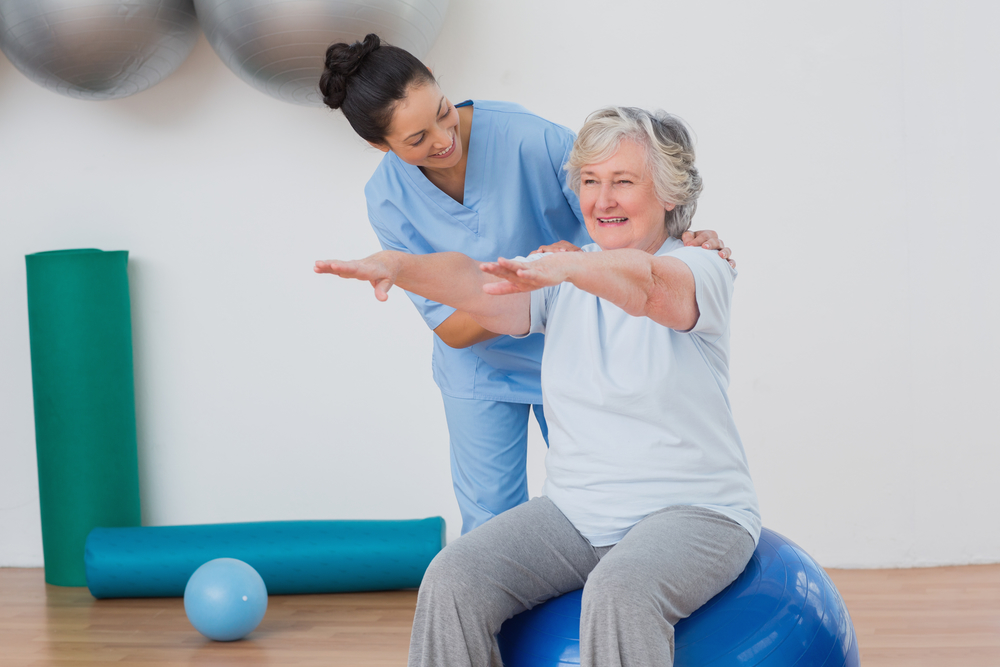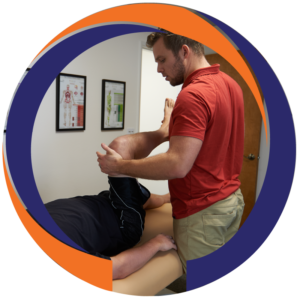“Just because something is traditional is no reason to do it, of course.” ― Lemony Snicket, The Blank Book
At some point, when we’re experiencing chronic pain, we try to get some professional help. For many people this means going to our doctor. And, in the case of many forms of chronic muscle pain or “kinked” necks and sore backs, the next step is physical therapy.
Traditional Physical Therapy and Therapy-Based Alternatives
 According to the website of the American Physical Therapy Association ™ (APTA), physical therapists, or PTs, are defined as,
According to the website of the American Physical Therapy Association ™ (APTA), physical therapists, or PTs, are defined as,
“… movement experts who optimize quality of life through prescribed exercise, hands-on care, and patient education. Physical therapists teach patients how to prevent or manage their condition so that they will achieve long-term health benefits.”
Physical therapists typically begin treatment by examining a patient and then developing a treatment plan, using various techniques to “promote the ability to move, reduce pain, restore function, and prevent disability.”
In all these respects, the approach and goals of physical therapy closely aligns with the approach and goals of the practitioners at Pain and Performance Solutions. However, there are some significant and fundamental differences, as well.
Like physical therapists, we are thoroughly trained and certified in all the techniques and therapies we employ, such as Active Release Technique (ART®), Selective Functional Movement Assessment (SFMA™), NeuroKinetic Therapy (NKT®), and Proprioceptive Deep Tendon Reflex (PDTR®). We use these body work systems to aid muscle recovery and correct muscular dysfunction.
However, unlike physical therapists, we are not constrained by doctor recommendations, insurance limitations, or the limited range of methodologies only approved by the medical establishment. This is not to say that what we do is untested or untried. Quite the contrary. The systems, techniques, and therapies used by Pain and Performance Solutions are evidence-based medicine.
But with the advantage of not being constrained by board-approved evidence reports.
Evidence-Based Therapies and Petri Dishes
In 2005, two Australian researchers, Barry Marshall and Robin Warren, were awarded the Nobel Prize in Physiology or Medicine for their 1982 discovery of the Helicobacter pylori bacterium that colonizes in the human stomach and is a cause of chronic superficial gastritis, chronic active gastritis, peptic ulcer disease and gastric adenocarcinoma.
However, it was many years of providing evidence and proof to a skeptical and unbelieving medical community before their discovery was begrudgingly accepted as fact. Prior to their discovery, it was a long-standing belief in medical practice that stress and lifestyle factors were the major causes of peptic ulcer disease. The idea that it was actually caused by bacteria seemed ludicrous to the medical experts.
Frustrated by this unwillingness to embrace their work, in 1985 Marshall underwent a gastric biopsy to provide evidence that he didn’t carry the bacterium, then deliberately infected himself by ingesting a petri dish of Helicobacter pylori bacterium to show that it did, in fact, cause acute gastric illness.
An account of his extreme experiment was later published in the Medical Journal of Australia, which described the development of a mild illness that lasted 14 days. Medically proven gastritis was present on the tenth day after he ingested the bacteria, which was mostly resolved by the fourteenth day.
The moral of this story is that evidence-based therapies are not limited to or only viable within the confines of traditional physical therapy.
Paradigms of Health and Illness
One of the fundamental differences referred to earlier here is the paradigm, or mental model, health, illness and the human body. For example, traditional Western medical professionals tend to view the human body as a machine that wears out and needs parts “replaced” or repaired.
Another paradigm, however, is one that takes the approach that time and use actually make our bodies and parts stronger. Instead of “repairing and replacing” parts, maintaining or restoring balance is key. Taking this a step further, the mind-body paradigm extends this paradigm to include such things as stress, psychologic coping styles, and social supports as primary factors of health and disease.
Julian Corwin, founder of Pain and Performance Solutions, graduated with a degree in Electrical Engineering and has incorporated an engineer’s perspective in understanding the human body. One of the things he determined early on is that the brain is the key to healthy movement. In fact, it could be said that just about everything to do with healthy movement is centered around the brain.
Dysfunctional movement is essentially an issue with the ability of the muscles to respond properly to the signals from the brain, and vice versa. The muscles provide information about their state to the brain – but only the brain can control them and tell them how to move, how much default tension to have, and how long they should be allowed to stretch before contracting.
 There are many aspects of the human body’s motor control processes that resemble electrical control systems and the way to solve motor problems is to fix the broken communication between muscles and the brain.
There are many aspects of the human body’s motor control processes that resemble electrical control systems and the way to solve motor problems is to fix the broken communication between muscles and the brain.
While physical therapy and Julian’s approach to movement therapy are actually not far removed from one another, there are still several limitations in the medical system for physical therapists. The result is that patients have no alternative to typical treatments that carry over eight weeks or more of physical therapy by a therapist instructed to work on a specific area. And this area is often only the area of pain, not the root cause, and the patient is sent home with “one size fits all” exercises to follow.
Pain Relief With Pain and Performance Solutions
When you come to your first appointment, we will endeavor to learn everything we can about your present discomfort as well as any history of pain. Achieving complete pain relief with us begins with an understanding of when and how your pain started. A full examination will help us determine which form of treatment is best suited to get you on your road to recovery.
Your openness and honesty are important, as is your trust in us. Ultimately, getting your body healthy and working properly is the only way to achieve total recovery.
So, don’t hesitate to reach out. We are here to help and will answer any questions that you may have. You can reach us at (707) 636-4404 or by filling out our online contact form.